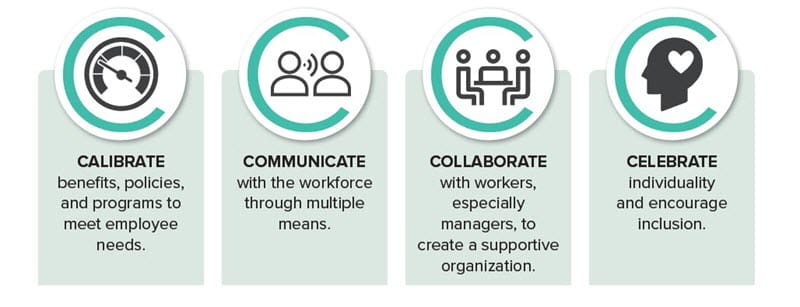When people are highly stressed, highly emotional, burnt out, they may feel like the next thing to happen will be the straw that breaks the camel’s back. In that situation, people are much less likely to be able to step back, assess the situation, put it in perspective, and respond in a way that’s actually going to be productive.
Eventually, this stress impacts a business’s bottom line through increasing healthcare costs, high turnover rates in critical positions, and increased legal costs and accidents. Research from the CDC and the International Monetary Fund estimates the cost of productivity losses due to absenteeism in the U.S. at more than $225 billion.
A Mindful Organization offers policies and benefits appropriate to their workforce and it builds a supportive culture that encourages workers to reach their performance potential. Just as individual mindfulness can enhance focus and reduce stress and anxiety, organizational mindfulness increases awareness of both marketplace and workplace conditions that drive business innovation, reliability, and opportunity, and can also improve employee retention, engagement, and productivity.

These “four C’s” define a path to creating an integrated work-life culture that leads to improved gender diversity in senior positions, lower turnover in critical positions, increased rates of employee engagement, and a stronger talent pipeline.
Enter your email below to receive a PDF of the full 51-page report representing 198 organizations that described their strategy for identifying employee needs, providing benefits across multiple work-life domains, sustaining employee-led efforts, and building community.